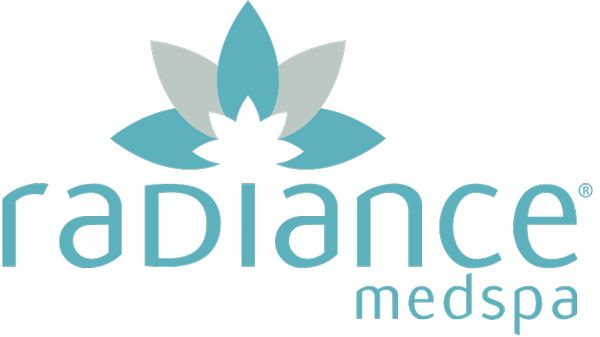![]() Original Article By Jolene Edgar.
Original Article By Jolene Edgar.
A spotless, lineless, flawless complexion is lying just beneath the surface of your skin-and doctors have found that a classic treatment is the fastest way there.
Satin slip dresses slinked down the spring runways. Celebrities are wearing chokers on the red carpet. And here's one more '90s revival for you: the chemical peel. After being eclipsed in the early 2000s by new skin-resurfacing lasers, these classic treatments (like, ancient-Egypt classic) are back on top in dermatologists' offices. More people are getting them now than in 1997 (when peels were the number-one cosmetic procedure in the country), according to the American Society for Aesthetic Plastic Surgery. "Turns out good old chemical peels can actually deliver certain skin benefits-like reversing melasma and breakouts-better than high-tech devices," says Doris Day, a clinical associate professor of dermatology at NYU Langone Medical Center. By casting off dull surface cells, they improve fine lines, acne, discoloration, and more. And they do it for all skin types and colors-usually for a fraction of the cost of flashier (literally) options. "The minute I switch on a laser, things get expensive," says Vivian Bucay, a San Antonio dermatologist. A superficial fractional-laser treatment can run up to $1,000 a session-and you'll probably need several. A medium-depth chemical peel may cost a third of that and "gives more impressive results in a single treatment," says Bucay (but count on more recovery time).
As with most old-is-new-again ideas, today's peels aren't just total retreads (the new slip dresses are better too, FYI). "When glycolic peels got really popular in the '90s, they hurt like a mother and left skin raw," says Jeannette Graf, an assistant clinical professor of dermatology at Mount Sinai Hospital in New York City. But acid formulas have been refined, and so have dermatologists' approaches to using them. "Our goal now isn't so much to cause visible peeling as it is to infuse the skin with ingredients that diminish lines, build collagen, and improve tone," says Jennifer Linder, an assistant clinical professor of dermatology at the University of California, San Francisco, and the chief scientific officer for the clinical line PCA Skin. Still not sold? Here are five more reasons to book a peel-and help your skin make a radical comeback.
Peels can make your skin-and skin-care products-work better. In minutes, acids lift away dead cells and trigger a lovely chain reaction: "As that topmost layer is shed, signals are sent to the living cells below to multiply and move up, to increase collagen production, to make more hyaluronic acid-to act younger," says David Bank, an assistant clinical professor of dermatology at Columbia University/Presbyterian Hospital in New York City. A thorough sloughing also offers one very immediate upshot: smoother skin that's both more radiant and more receptive. "Your skin-care products perform better after a peel because there are no dead cells impeding their penetration," says New York City dermatologist Neal Schultz, who averages at least 50 peels a week in his Park Avenue office.
They're low-risk, and you can go custom. There are chemical peels that are safe to use on every skin color without risk of hyperpigmentation (usually a worry with darker complexions). "We now know that using low percentages of multiple acids gives a better outcome with less irritation than a single acid at a higher strength," Linder says. Doctors have plenty of premixed cocktails to choose from, like PCA Skin Sensi Peel, which mixes trichloroacetic acid (TCA) and lactic acid to rev up collagen synthesis deep down and dissolve the drab skin on top. But a lot of doctors also cook up their own recipes to address very specific concerns. For tenacious brown spots, Bucay adds a pinch of brightening vitamin C or a smidgen of bleaching hydroquinone to her acids of choice. And when treating those same spots on sensitive skin, she offsets the potent lighteners with soothing polyphenols.
The right peel can end acne and soften the scars that come with it. Salicylic acid peels and Jessner's peels (equal parts salicylic acid, lactic acid, and resorcinol, an antiseptic exfoliant) dive deep into skin to unclog pores while also skimming the surface to erode blackheads and fade post-pimple marks. Another advantage of salicylic acid: It lingers in the pores, where it continues to keep them clear over time. To improve pitted acne scars, Harold J. Brody, a clinical professor of dermatology at Emory University in Atlanta, targets individual divots with a high percentage of TCA before applying a weaker acid to the rest of the face to even things out. "I think this method beats most resurfacing lasers, plus there's little to no downtime and it's safe for all skin colors," he says. Bucay prefers treating acne scars with peels to skirt this surprising laser pitfall: "There's roughly a 30 percent chance of an acne eruption following Fraxel," she says. "It's really disheartening when someone gets a flare-up of the very thing that left her with scars in the first place."
Nothing controls melasma better. There isn't a permanent cure for the recurring sun-triggered dark patches brought on by hormonal surges (like those caused by pregnancy and the Pill), but chemical peels (paired with at-home bleaching creams, high-SPF sunscreen, and strict sun avoidance) offer the best fighting chance. Lasers may make lofty claims, yet "they're essentially trying to treat a light- and heat-sensitive condition with light and heat," says Cheryl Burgess, an assistant clinical professor of dermatology at Georgetown University in Washington, D.C. Even when a laser does eviscerate splotches initially, pigment often reappears weeks later, making lasers seem like a major investment for a short-term reprieve.
TA peel will let you (maybe) toss your undereye concealer. We don't even like opening our eyes in the pool, so we'll be the first to admit that acid near our eyeballs sounds dicey. But doctors say Glytone's new Enerpeel Technology Brightening Peel System works beautifully and safely on the hereditary dark circles created by piled-up pigment. They credit the form of the acid-3.75 percent TCA and 15 percent lactic acid in a nondrippy gel carefully dispensed via a pen applicator-and the delivery system, which "drives the acid in deep, bypassing the epidermis to lessen irritation," explains Graf. A series of treatments may be needed, but some people see a profound improvement after just one.

